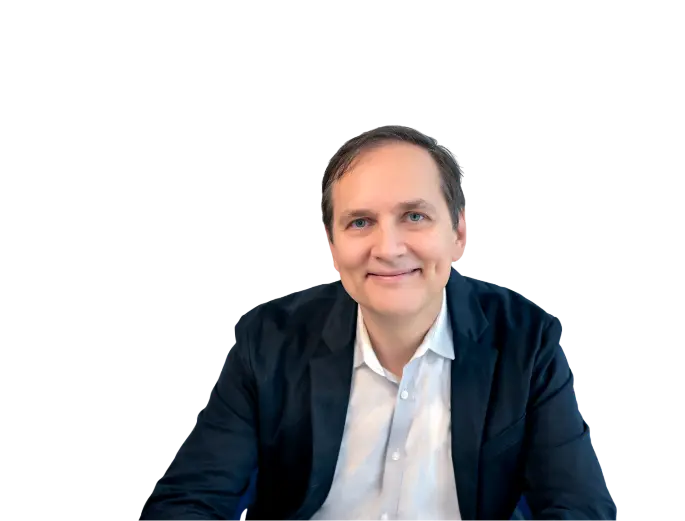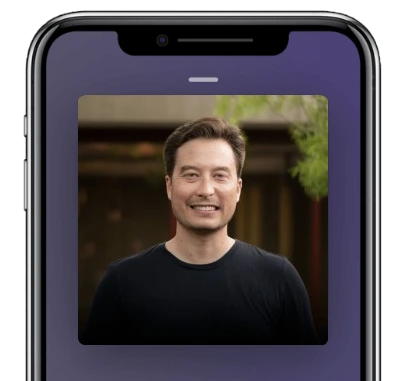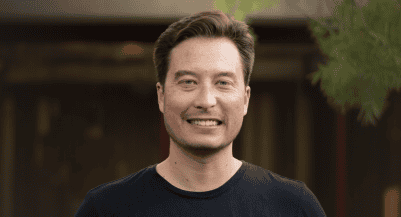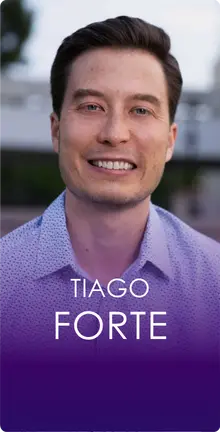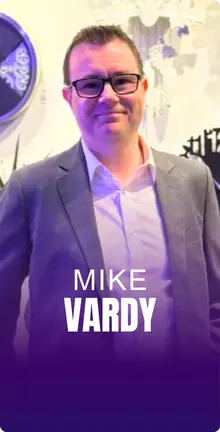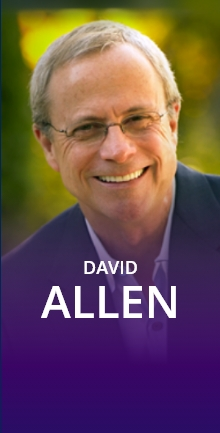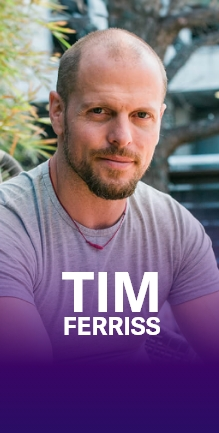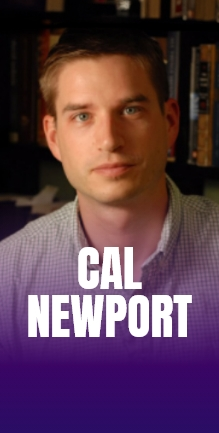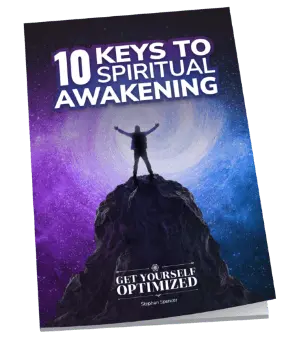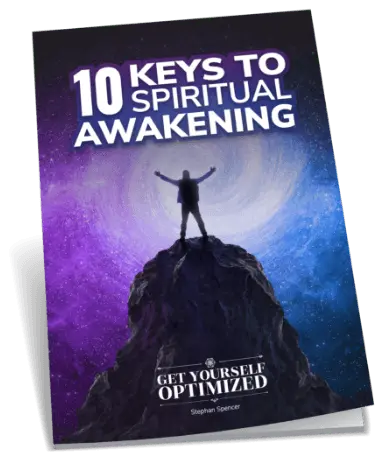In this Episode
- [02:18]Stephan welcomes Tiago Forte as they tackle organizing information and streamlining workflows. Stephan asks Tiago about the inspiration behind his second book, The PARA Method.
- [04:14]Tiago introduces the concept of PARA, a simple way to organize information across different platforms.
- [09:39]Stephan shares his struggle with managing a large volume of tasks, prompting Tiago to suggest some practices to prioritize and filter tasks and notes.
- [19:31]Tiago describes a four-stage creative process: capture, organize, distill, and express.
- [20:37]Stephan and Tiago discuss intuition, with Tiago explaining that intuition is physical sensations that indicate subconscious information coming to the surface and Stephan agreeing that intuition is a way of receiving guidance.
- [28:52]Tiago shares an example of a small, intuitive insight that changed his life.
- [40:24]Tiago describes moments of awe as instances of his mindset shifting, perspectives changing, and learning becoming more enjoyable and complex.
- [43:32]Tiago reveals his go-to sources for inspiration and recharging his emotional and spiritual batteries. He also notices a direct correlation between missing a meditation and experiencing higher anxiety and poor decision-making.
I’m so excited to have you on the show again, Tiago. Thank you for coming.
I’m so happy to be back. Thanks for having me.
Let’s talk briefly about what inspired you to write a second book here. You’ve got The PARA Method. The Building a Second Brain book was a huge success. How many copies of that did you sell?
It’s always hard to tell for sure, but definitely, it’s more than 100,000 in the year it’s been out.
That’s amazing. Congratulations.
Thank you.
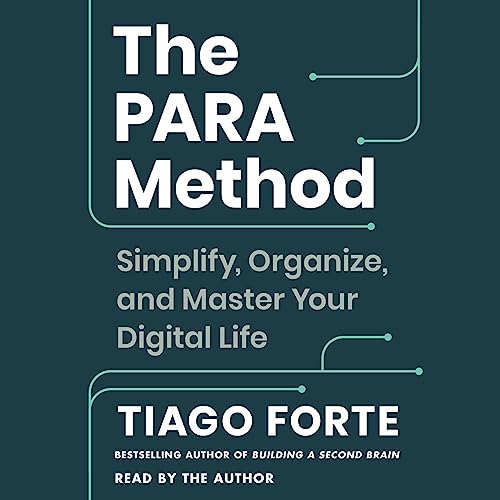
Why did you need to expound so much into PARA in this new book, The PARA Method? We’ll explain that acronym in a minute, but why an entire book on it?
I did not think I would publish another book a year after the first. It almost happened by accident, funnily.
Building a Second Brain is my holistic methodology. It’s the big, overarching creative process that is valuable, has resonated with people, and is powerful, but I kept hearing from people that they wanted more on PARA, which is just one technique addressed mostly in 1 out of 18–20 chapters. It addresses a very particular problem: how I organize all my stuff.
For all the people out there who are not interested or not yet interested in expanding their creative output and reaching their creative potential, if all they’re trying to do is organize their documents folder, email inbox, bookmarks, and notes inbox, PARA is the very specific solution to that problem.
This is a mini book. It’s only about ⅓ of the size of Building a Second Brain. It expands on that one chapter about PARA in Building a Second Brain with more material, guidance, and insights about organizing digital content.
Please elaborate a bit on PARA. What does it stand for? How did that method or that system come about?
It came about in a very happenstance way, but I guess most great things in my life happened by accident. I learned this key distinction, which is the difference between projects and areas of responsibility, from David Allen, who wrote Getting Things Done.
He was on the show, by the way.
Building a Second Brain is my holistic methodology. It’s the big, overarching creative process that is valuable, has resonated with people, and is powerful.
Cool. I’ve only met him a couple of times, but I consider him a great mentor to me. I adopted his methodology, GTD, right when I started my career. It was just extremely influential for me.
Me too. It’s been part of my life for decades.
Incredible. He has so many ideas, concepts, and distinctions.
One of the most impactful was this idea that there are short-term, time-limited effort projects—things you start, and then you end. But then there’s this other important category, which is areas—important things that you value and invest time and effort into but don’t have clear beginnings and endings. They have standards to be maintained over time.
A project is writing a book, whereas something like writing—which never ends—is an area. Fixing your back pain is a project, and your health is an area.
That was how it all started: I just started organizing my entire life, according to P and A. That was how the first P and A in PARA came about. These are Projects, and these are Areas.
Then, over the years, I discovered or felt the need for a third category, which is like everything else. That’s Resources—stock photos, typography samples, notes on books, and all this digital stuff that we just accumulate. I knew some of it was very valuable, and I wanted to keep it, but it had nothing to do with my projects or areas. That’s how Resources came about.
Then, Archives started when I realized it was all getting to be too much. I needed to get rid of things, discard them, and move them out of my space, but I didn’t want to delete them. Why should you delete anything when you have a terabyte of space on your computer, Google Drive, and all these places?
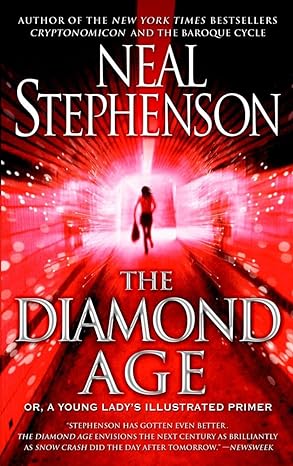
I just invented this fourth category called Archive, and that’s PARA right there.
What would be an example of a practical application for somebody who isn’t currently implementing it?
If you have any repository of information in your life that you want to organize, but you have limits on your time and attention span, and you’ve got other things that you’d rather be doing, PARA is not the most thorough or even most sophisticated way of organizing content, but it’s the easiest. It’s the 80/20. It’s the MVP of organizing.
If you want to do just good enough organization while spending minimal time and energy, PARA is what it is because you just can’t get simpler than four buckets and four categories to encompass all information on all platforms.
You’re asking for a use case or a benefit. It is to lower the stress, anxiety, overwhelmed, and lack of clarity when your digital world is in chaos.
Somebody who has, let’s say, a mess of icons on their desktop.
Your desktop is covered in stuff, and endless browser tabs are open. You don’t have the time to read them, but you’re afraid to close them. Your email inbox has a red badge with a three-digit or four-digit number. You have a pile of papers on your desk that you’re not even sure what’s in there. These are all warning signs.
One thing I learned from David Allen that was freeing for me was that he shared this in one of my interviews with him. He said if you want to organize and get down to inbox zero in your email, don’t worry about everything accumulated up to this point. Just put all of it in one fell swoop into a folder called DMZ (demilitarized zone), and then start fresh from that day forward.
There are short-term, time-limited effort projects—things you start, and then you end.
That was very freeing because I did that, and I could keep up. I didn’t miss most of the things in the DMZ folder. If I needed something that wasn’t in the new organization system, I could easily dig in the DMZ and search for it there.
It’s such a simple but powerful principle that is true in the physical world as well. In the digital world, it just becomes a hundred times truer and more important because things just proliferate endlessly.
Every day, hundreds of megabytes, maybe gigabytes, of content are just appearing. Emails are just appearing in your inbox. Random files are appearing on your desktop. It’s accumulating without your consent and your permission, so you have to be even more decisive and unsparing in your ability to—in my terminology—archive away.
The DMZ is like put it out of sight, out of mind. It’s still all available. You can search and find it, and you’re not losing anything, but you’re gaining peace of mind.
For sure. If somebody is effectively capturing things, you’ve got the CODE framework—C in CODE is Capture. We’ll talk generally about CODE in a minute, but I want to get to the next stage, which is the O or the Organize.
Let’s say the person has a trusted system, so they capture pretty much everything. They don’t have random Post-it notes everywhere.
That was me, by the way. I have a couple of trusted systems. I use Evernote and Things by Cultured Code. We spoke about Cultured Code and the Things app in our previous interview in 2019.
Every task captured and every note written is a commitment to your future self — a promise to act, innovate, and elevate. Share on XThat’s in pretty good shape. It’s where you get to O; after that, everything falls to bits for me. I have a hard time keeping everything organized.
I know PARA is a very simple and straightforward way to organize stuff, but with regards to to-dos, I have about 5000 items in Things. It’s so stressful even just going into that app because the emotional weight of having all this work to do and all these missed opportunities sitting there for so long weighs on me.
It’s not fun to go in there, and I never do the weekly review that David Allen recommends. I don’t take time to process my to-dos and turn them into things that are more of a next action, organized, assigned to a category of projects, or assigned to a person. For example, if I can delegate it, it just sits there, stressing me out.
I haven’t fixed this yet, so maybe you can give me some tough love about it.
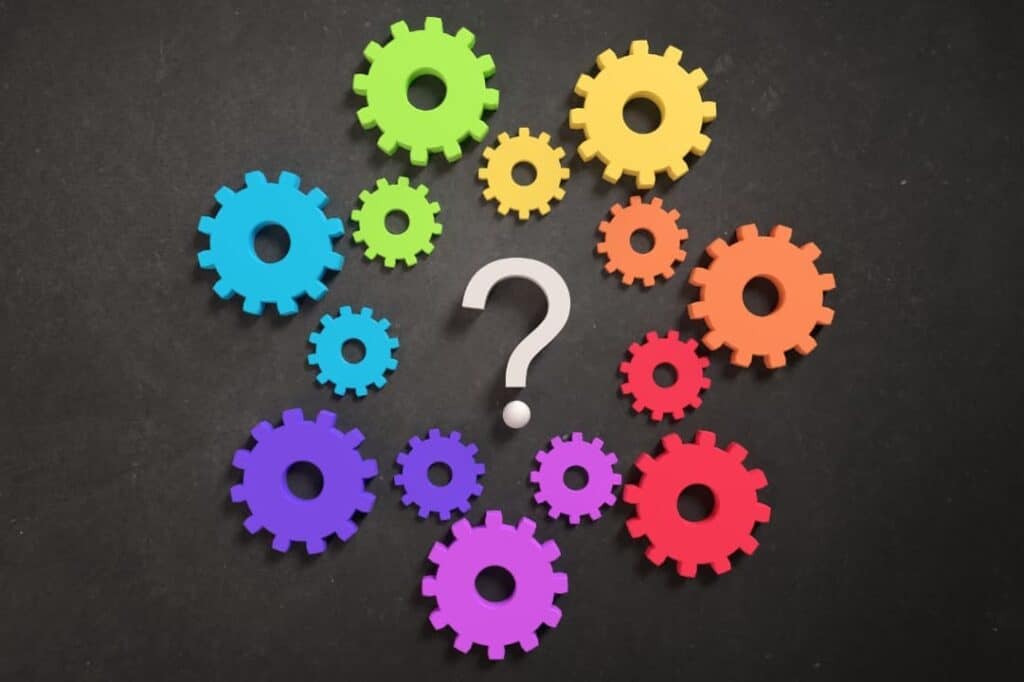
I think you’re describing the absolute most common case. It’s probably above average because you even know there is a problem.
Awareness is half the battle.
I would look at a few things: could you make the filter that determines what even goes in Things in the first place tighter? Could you be more exacting and have a higher standard for what is allowed in the first place? Five thousand to me, right off the bat, no system can handle that volume of tasks.
Or any team could, let alone one person. This is a lifetime of work. Most of the world will not fall apart if I never do those things, but I need to get out of my head.
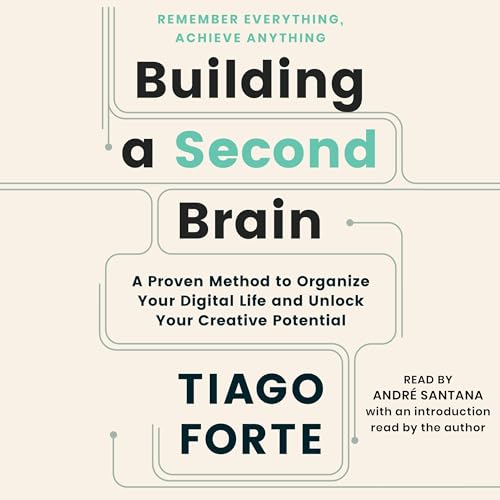
Evernote is where things go to die. I hardly ever review things that I put in Evernote. I’m afraid that if I put it in Evernote, it will never get looked at again. I just got it out of my head into something now, a capture system, but there’s no review or decision made about any of it.
But I hear what you’re saying. That makes total sense. They need tighter filtering or requirements to make it a to-do in Things. Not everything deserves even to be loaded in there.
There are a couple of mindsets that might be helpful here. It’s hard and creates a mental load to decide because decisions take tremendous energy. It’s so ironic. Ironically, deciding not to keep something can take more mental energy than just keeping it. You’re like, “Oh, I’m trying to save energy. I’ll just default to keeping it,” but the result is you now have no mental energy because there’s too much of it.
One way you can think about it is that everything you add—and it sounds like it’s the same phenomenon on both your actionable tasks in Things and your notes and references in Evernote, so you could apply it to either both—is imagine every item you’re adding, tasks over here, notes over here, as a drop of water that is diluting the value of everything that’s already there.
That resonates. If everything’s a priority, nothing’s a priority.
Totally. It’s like that idea of the signal and the noise. If there’s more noise and more stuff in general, whatever value is there is diluted. It’s hidden. It’s spread out over more space.
The other mindset, if you want to go even further—and this is when I really need to change my mindset to start thinking this way—is to think of each item as a debt. Every task you capture and every note you write down, you are putting your future self in debt because you’re promising or creating an expectation that you’re going to do something with it in the future.
By the way, have you read Dr. Ben Hardy’s book, Be Your Future Self Now?
No.
I recommend it. It’s really good.
Decisions take tremendous energy.
I’ll check it out.
Putting your future self in debt by adding to-dos to your to-do list resonates as well. When I haven’t made commitments to do these things, I’ve just captured them. By not organizing them, I’ve not made any commitments, which is interesting to contemplate.
That could be an avoidance behavior. It’s not just the stress of opening the app. It’s the avoidance behavior and the procrastination to even process these items, assign them to projects, try and figure out whether to delegate, defer it, or whatever, and then assign it to a date or a due date. That stresses me out, too. I’m trying to avoid committing to this stuff that’s not even doable. It’s impossible for me to commit to all these things.
That’s where the tension lies. We do have some commitment to them. If it’s truly zero commitment, I would give you a minute, go in right now, select all, and delete. But you probably don’t want to do that because there’s some little attachment. You have a bit of commitment already. Some of you want to add more commitment by doing that processing, but you also don’t want to add that commitment and probably, in some sense, can’t add commitment to the extent that you would wish. Those four contradictory feelings are all at odds.
Logically, I know I need to declare to-do list bankruptcy, but I can’t bring myself to do it. I was thinking, “Oh, maybe I’ll just switch apps.” But no, I love Things. I don’t want to switch from Things to something else because I want to keep an archive of these to-dos. There’s important stuff in there. I don’t want just to delete them; I don’t want to switch apps, and I don’t want to archive this in a way that makes it clumsy and hard for me to get to the archives.
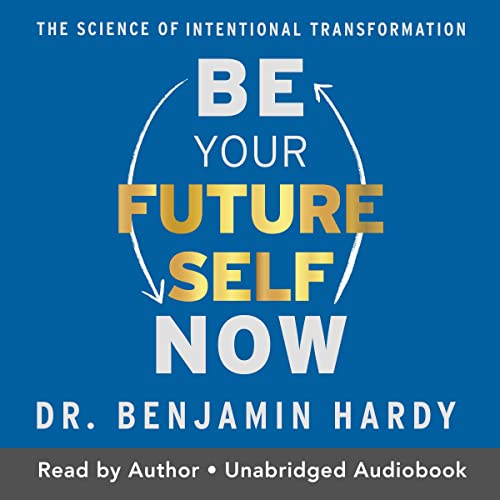
Here’s another thing you can try. We’ve talked about archiving. You know the value of archiving, but it can also be difficult because that’s still a decision you have to make one by one.
There’s this principle that it’s much easier to decide what to save than to throw away. Marie Kondo’s big discovery is that if you go through your closet, leave everything just as it’s been forever, and decide what to throw away, and you’ll throw away nothing practically. But if you get everything out, dump it on the bed, and assume by default it’s going, then suddenly something inside of you reaches out and goes, “No, I love that. That sparks joy. We need to keep that.”
One thing you can do is archive everything and then notice what you regret having archived, what you crave that you want to look at, and what you do end up accessing just out of necessity. You save by exception only the 1% that matters rather than trying to decide for each and everything that gets archived.
I like that. From a practical standpoint, how would you do that with Things? Could I drag everything into someday/maybe? But I’ve marked it all as done, and then it would go on the logs, and then I’d untick it in the logs to restore it.
I would use a someday/maybe feature. I would move everything to someday/maybe. If something is someday/maybe, you should consider that almost pure randomness. That’s some idea you had just in a second and assume virtually zero potential future value unless proven otherwise.
Whether you call it an archive or someday/maybe, you just need a place where something can exist but have no attachment or commitment. If it all went up in smoke, you’d say, “Oh, huh, I guess that’s gone.” On someday/maybe things, if you need them for the projects, they’re in your sidebar.
The PARA method is not the most thorough or sophisticated way of organizing content, but it's the easiest — the MVP of digital organization. Share on XI like it. Let’s go through the CODE framework—Capture, Organize, and then what’s the D and the E?
CODE is my model. I don’t feel like I invented or created it. I feel like I discovered it through studying how actual creative professionals do their work. They all seem to move information through these four stages.
They capture it. They write it down, organize it in some way, shape, or form, add some structure, distill it, boil it down, narrow it down, and choose the most important parts. Then, they express it, communicate it, decide on it, and produce a result or outcome.
I’m trying to reveal or illuminate that this is how a creative process works and then apply it most of all to knowledge workers. Knowledge work is a creative medium. To be a knowledge worker of any kind is inherently creative. It’s almost like we all have to wake up to our status and identities as creative types. Even if you’re the most left-brain accountant, analyst, or whatever, there is still a creative process at work.
Capture when something resonates with you.
Where does intuition fit into this? Is it in the Capture? Is it in the Express? Is it through all four phases?
It’s in all four, but it shows up differently. What I’m describing—a process, stages, and things—sounds like it’s very linear and mechanical. It sounds like I’m an engineer describing a manufacturing line.
Sometimes, it’s useful to think of it that way, but you want to make decisions at each stage, primarily not analytically but intuitively. The reason is that doing anything analytically generally takes too much energy. If you try to have this clear, logical, and rational set of criteria, flow charts, and checklists, that consumes a huge amount of energy, and you just won’t have the stamina and mental capacity.
It’s a surprise to most people that you can capture, organize, distill, and express completely intuitively. We can talk about each of them.
Capturing intuitively—capture when something resonates with you, not according to some flowchart. If it moves, excites, and surprises you, if it makes your heart beat faster, if your pupils widen, and your eyes widen, those are the criteria. When you get goosebumps, when the hair on your neck stands up, these kinds of things are what it is.

By the way, what does intuition mean to you?
It’s a bit mysterious, but I like converting it into almost practical terms. For me, intuition, the way that I know what’s happening, is those physical sensations. There’s always a physical, emotional, or internal sensation. I assume or believe that subconscious information is coming to the surface.
There’s something real there. Something is happening in my brain and nervous system, but I can’t quite put it into words or rational thoughts. Instead, my body tells me that some subconscious information is important through the language of sensation.
Can you increase the level of intuition you receive, or does it just happen?
We all have a baseline. Some people are naturally more in touch than others, but I was not. It’s very much something that I’ve had to train and learn.
If you keep ignoring your intuition, it will subside. It has to be strengthened and cultivated.
There are different ways of doing that, but the best is simply to pay attention to it. It’s intuition. If you keep ignoring it, it will subside. It has to be strengthened and cultivated. Your brain and body will only give you more if you do something with the information it’s given you. Over time, the more you ignore it, the more it’s like using or losing it. If you don’t act on your intuition, over time, it’s going to get weaker and weaker.
I would agree. I read a book that has just been so powerful and pivotal in awakening my intuition. It’s called A Still, Small Voice. The subtitle is A Psychic’s Guide to Awakening Intuition. It’s by Echo Bodine, who was a guest on this podcast. It’s just been a game-changer. It helped me to tap into my intuition.
My understanding of intuition is that it’s that still, small voice. As the Bible mentions, it’s your receiving guidance from the upper worlds, from God, from your guides, spiritual support team, angels, etc., and whisperings into your consciousness.
Having more desire for that increases the receiving ability, not just practicing it, as you said, and tuning into the awareness of it. Certainly, that also makes a difference, but increasing your desire for it, requesting it, praying to God for more intuition to come on specific matters or generally, and praying for more desire in that regard makes a huge difference.
Here is a quick example: I prayed for more positive childhood memories because of a difficult childhood. I don’t have a lot of positive memories from my childhood.
I did 40 Years of Zen, the week-long program of Dave Asprey in Seattle, and that unlocked some really beautiful childhood memories I hadn’t had since childhood. That was in 2018 or something like that when I did that program.
Driving back from Orlando to Miami, everyone was asleep in the car, and I want to have more of these memories without having to do another week-long neurofeedback program. I asked God to grant me more of those memories, and they came flooding in, ten times as many as I had while going through that week-long program. They just all flooded in at once.
Incredible. That’s such a great example. What matters more than that? Who cares about your book highlights?
Cool. I highly recommend you check out that book. Whoever’s listening to but you, Tiago, I would love for you to read that book, A Still, Small Voice by Echo Bodine.
Speaking of that kind of intuition, you mentioned the physicist’s intuition in your book Building a Second Brain. Can you elaborate a bit about that?
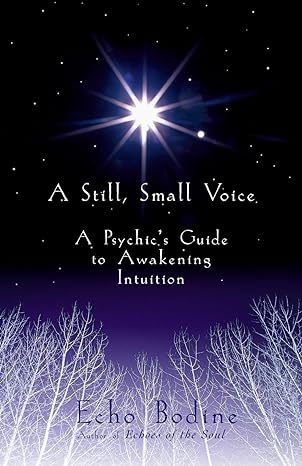
Do you mean the story of Watson and Crick?
One that came to mind was Feynman. He had this observation of the wobble and spin correlation. Can you elaborate on that, and then we can talk a bit about the whole, generally speaking, physicist’s intuition?
That was just a story I talked about in my book about the physicist Richard Feynman. This great mind who had this Nobel Prize. He knows a thing or two.
He had this premonition in an instant. I think he was in the cafeteria at Cornell University, and someone threw a plate in the air. Times were wilder in those days. He could see the Cornell emblem on the side of the plates and how the plate was spinning and wobbling with that emblem, making it visible. He just had this hunch, premonition, or instinct that there was a relationship between the rate at which it was spinning and the rate at which it was wobbling. He eventually found that relationship.
I use that, of course, to illustrate that people sometimes have incredible intuitive leaps through intuition and instinct. But that’s not the end of the story. You then have to get that hunch, create a project around it, run experiments, collect data, try things, do things, and make errors. That’s the beginning of the story, not the end.
That’s what I see a second brain as. It’s a way to test and figure out all these different hunches that we’re always having. We’re always having these little, “Oh, the way that the world works,” something like a business could try, or a new way of communicating with a colleague, but then we got to do something with that intuition.
Yeah. It’s got to be reproducible, scientifically validated, published in a peer-reviewed journal, or whatever to put that out there in the world. It creates that ripple effect. Just having an intuition and doing nothing with it is like getting some gift—let’s say you have the gift of healing—and not doing anything with it your whole life.
People sometimes have incredible intuitive leaps through intuition and instinct.
I so agree with that. It’s a gift.
What would be an example of some sort of insight or intuition that you received that was important or monumental in your life?
What’s funny is it tends to be small things. They start small. I can’t say I’ve often or maybe even ever had the classic suddenly, in a flash, some great truth about my entire life just gets revealed. Usually, it starts with noticing some small little thing.
The example that comes to mind is what’s in my first book, Building a Second Brain. So many insights and the great majority of everything in that book were not arrived at through research. I have to be honest. It’s not research-backed. It’s empirical. It’s from my experience and the people that I teach and coach. Often, I would just notice that they were doing something effective that was so small, simple, and easy that they didn’t even realize that they were being effective.
My now wife, Lauren, was in grad school when I was developing the Building a Second Brain content. I’m around a lot of grad students. I would look at how they highlighted their books, which were in two layers. They would make a highlight, but then, as always happens, you over-highlight, and there are too many highlights to be useful, so they go back and add an underline to the parts within the highlights that mattered, which probably students of all ages have been doing for time immemorial.
Looking over someone’s shoulder, noticing that that was happening, and then seeing a link between the usefulness of that technique and how, in the digital world, that was even more important became progressive summarization. That is one of the pillars of my book, which people worldwide are reading about now because that’s just one little moment of essential intuition.
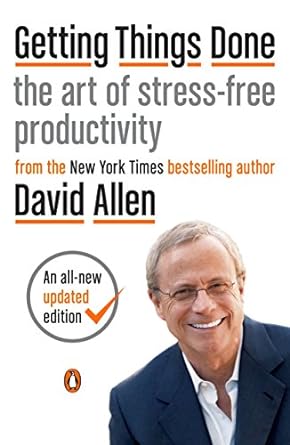
What about Feynman’s 12 favorite problems really jumped out at you? Again, it’s intuition. You get that body sensation.
For me, for example, when certain numbers or certain words jump off the screen at me or off the page if I’m reading from a book, a road sign, or whatever that just lit up, I know that’s a message for me. I know there’s something I meant to decode, unpack, decipher, expose, or whatever.
I think you hit the nail on the head. That’s what it is. These questions act as filters. They act as lenses for you to notice things. A questioning, curious attitude and mindset is a wonderful way to approach the world. Not to wake up in the morning with preconceived notions that you will now enforce upon your reality but just to wake up and have an open-ended. That’s the key. By the way, the questions you have as your favorite questions should not start with did, is there, or basically, questions that have a yes or no answer. They should be questions that begin with how or what. Basically, there are many possible answers.
If you go through life with these open-ended questions and are open to unexpected answers, you see answers everywhere constantly. There are solutions to anything you wonder about, but it takes that mindset just to perceive them.
What are some of your 12 favorite problems, or however many you have?
I have to be honest, and I don’t have only 12. I think I have probably hundreds. They’re not all written down in one place. They’re all over the place. I almost use it as a way of interacting with any project I’m working on or any problem I’m trying to solve.
I can tell you some of the ones I’m thinking about these days. One of them is in my business right now. During the pandemic, we had this huge explosion of business. The business 3X-ed almost overnight, and now we’re in an online course winter. Sales are slow, and people aren’t taking as many courses, are hesitant to buy, and are more price sensitive, which I’ve never had in a decade of having my business. This is the first non-growth year that we’ve had.
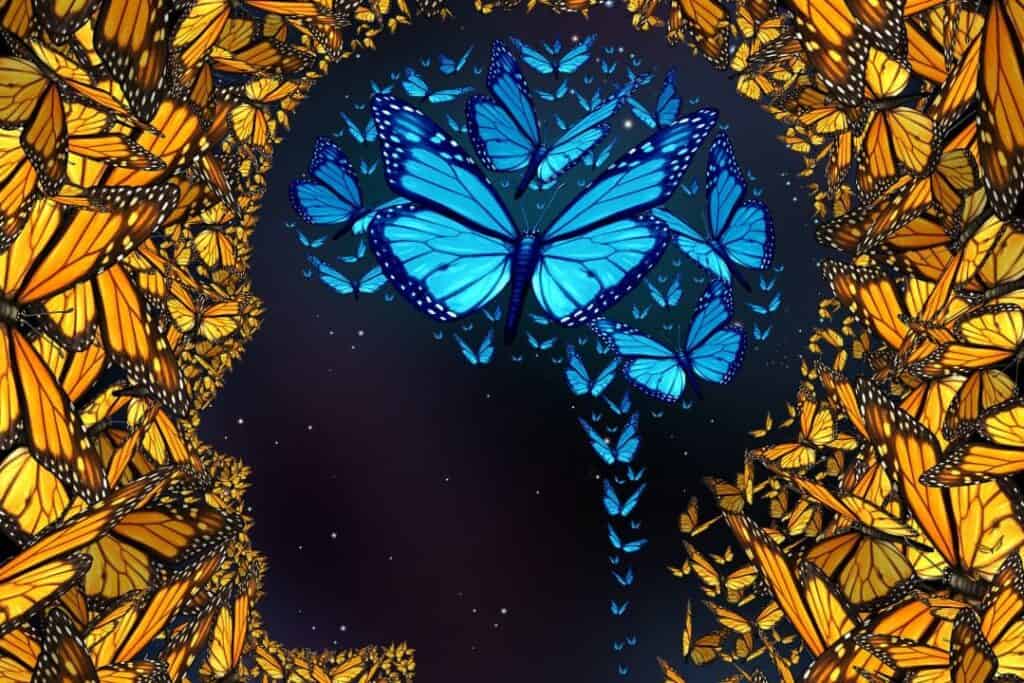
That opens up a world of questions like, “What is the right team for us in a non-growth environment?” Questions about the market. “What kinds of courses do people want and are they interested in and willing to buy in this new environment? How can we provide more value at a lower cost? How can we diversify and pivot into new areas that are less sensitive to the economy?”
Questions emerge right and left from one change in my environment, which is lower sales. That’s it.
I’ve got one for you. Why is this lower sales environment in my movie called reality? Why am I experiencing it? To what end? To what benefit? If everything happens for my highest and best good, and this is here for a reason, what’s the reason?
I love that. That’s a powerful question for any situation. I’ve had to wrestle with even identity issues. If you’ve only ever known growth from one year to the next, you have a certain view of yourself. It’s very easy to think you’re a business genius when your business has existed the whole time and has been a growing economy.
I view note-taking as just a conversation between my various selves through time in all directions.
There are a lot of people who are immersed in their work, and that becomes their identity. If they retire, then they get sick and die because it’s like their identity retired with them. There’s nothing left. There’s just a shell of a person after retirement.
Absolutely.
How does one not live in the past and the future but live in the now or in the present? How do you do it?
That’s a very expensive question. I have a lot of things I try to do. It’s a constant struggle.
Note-taking is part of it. I view note-taking as just a conversation between my various selves through time in all directions. It’s my past self speaking to my present self every time I look at a note. It’s my past self speaking to my future self.
If I look at a note and decide, “Okay, that’s interesting but not relevant for me yet.” In a weird way, it’s my future self talking to my past self. It’s like when I come upon a note and say, “Oh, thank you past self for taking this, I’m grateful to you, I honor you, that’s a message traveling backward through time.”
By the way, this will blow your mind. I interviewed a guy named Ray Brehm. He shared the story of him doing the Hoffman process. The facilitator had him and the rest of the cohort mentally travel back in time to when they were, let’s say, eight years old and tell that child, “I love you, everything’s going to be alright, and I’m you in the future.”
He remembered that moment after doing that exercise. Maybe I’m butchering the details. You have to listen to the episode to get all of it correct because he walked us through it.
He remembered, “Oh, yes, that’s right. I do remember being eight years old and having this experience of being alone in my room, feeling despondent and desperate and trying to figure out if I should kill myself. Should I run away from home or whatever?” He heard this voice saying, “I love you, everything will be alright, and I’m you in the future.”
When I tell them that story, a lot of people are like, “Oh, I just got goosebumps.” Goosebumps, by the way, I’ve heard referred to by multiple people as Angel bumps because it’s confirmation from the angels that what you’re receiving is true and important.
Every day, content floods the online world. Emails appear in your inbox and desktop, accumulating without your consent. It;s vital to be decisive and unsparing in how you archive and organize digital content. Share on XThat’s fascinating. In a funny way, all your memories exist in the present. They’re just different arrangements of electricity in your neurons. You can do something now that changes the past or at least your memory of the past. Those things are in communication even at a neurochemical level.
What I’ve learned through a lot of metaphysical studies, Kabbalah, and so forth is that time is an illusion. The past, present, and future are all happening simultaneously, so the past lives are not past. They’re happening currently. Your past in this lifetime is happening currently, as well as your future, so you can access your future self, who has all the resources, experience, knowledge, and know-how to solve the problem you’re currently facing. You can go back in time, send a message to your past self, and make a difference in your future as it unfolds because you successfully got that message.
That’s beautiful.
It’s fun. If you think of everything as a miracle, everything is divinely guided and orchestrated, and nothing is random. Just the synchronicities that start happening, what are the chances of this happening? One in a trillion, and then another thing like that, and another thing like that. This becomes a glitch in the Matrix moment that keeps repeating, and you’re like, this can’t possibly be the reality that I thought it was.
It’s like the exploration of agency. That’s how I view productivity sometimes. You’re just playing with your agency. Can you change something and make a dent in this reality?
I often say that every task is a miracle because if you think about it, physicists tell us, “Oh, we live in a universe that is just hurtling toward heat death.” Entropy, disorder and randomness are increasing throughout the universe. But for you to complete a task, set an intention, take some steps, and reach an outcome you said you would reach is the opposite of entropy.
You just create a little pocket of anti-entropy for every task you complete. You fought the universal tide of entropy long enough to converge on some outcome. You’re just a slightly above-average, hairless ape stuck to the side of a ball of dirt in the middle of nowhere. Why should you be able to do that?
Be unapologetic in experiencing as much awe as possible.
That’s one way of looking at it. But some people don’t see anything as a miracle, and others see everything as a miracle. Either nothing’s a sign, or everything’s a sign. You’ll have a better quality of life and experience more without-a-doubt signs, synchronicities, and wild coincidences if you think everything’s a miracle and a sign. That’s what I found, at least.
More joy, more surprise, more exhilaration, and awe.
What would be an example of a moment of awe for you?
I read that awe is the main emotion people seek when they learn and acquire knowledge. It’s just a little dose of awe. I was like, “No, I’m trying to maximize utility. I am trying to reach my goals and all these things.”
I said, “Actually, no, the moments I love the most are when I read or listen to something.” Do you know that feeling of, “Oh, my mindset is shifting? My perspective on the world is just turning on its axis.” That is awe. It’s this awe that, “Wow, this world is even more amazing, complex, and subtle than I ever understood.” That’s helped me learn better by being unapologetic that I’m after awe. I’m trying to experience as much awe as possible.
Time and nature are some of the best things to be in awe of.
Through that experience, you’re experiencing God or your higher power.
I’m curious. Do you stargaze or anything that, pretty much every time you do it, takes you into that awe state?
I feel like time and nature are some of the best things. Although lately, we have two young kids at home, including a newborn, so it’s pretty homebound existence these days, but my version of that these days is reading and music.
You can even get on Netflix and just make decisions. There’s stuff on Netflix that just completely blows my mind. It’s not trending. It’s not in the top 10 list. But even in the most mundane everyday places, if you make slightly different decisions about what to pay attention to, on Twitter, I find things that are incredibly profound, inspiring, and deep.
There’s a movie on Netflix that was powerful and profound for me. It’s called Kardec. It’s about the guy who started the Spiritism movement in the 1800s—an incredible movie.
The most amazing thing happened when my wife and I watched that movie. It’s actually in the middle of it. At one point, I had to pause it because our young son needed something, and then we returned to it later.
Something happened. I don’t remember the details of it now. I just remember the awe of it. Something happened, and then we hit play. The thing that played from that moment on for the next ten to twenty seconds was exactly about the thing that just happened.
It’s a good example of synchronicity.
It’s a great movie. I recommend it if you want a Netflix special or something to watch.
Entropy, disorder and randomness are increasing throughout the universe. But for you to complete a task and reach an outcome is the opposite of entropy.
I’ll check it out. It’s hard to find. You have to work to find these gems because the stuff they’re recommending is not the stuff.
A lot of dark dystopian stuff is making the rounds, like the Marvel nonsense and everything. Where do you go for inspiration to recharge your emotional and spiritual batteries?
Family. First, we live in LA County, near my and my wife’s families. We’re very deeply connected to them. Both are Latino families, so your family is your reality.
Second, I’d say nature. There’s some great nature down here—beaches, forests, a nature reserve down the street that we go to every week, and parks.
Reading always, for me, is a refuge. I like actually to escape the present. If I’m feeling stressed or overwhelmed, I go into the deep past in historical fiction—I’m a big lover of historical fiction—or the deep future, which is sci-fi. Between historical fiction and sci-fi, I can escape the present moment, completely forget my identity and who I am, and be entertained in those worlds.
And meditation. Meditation is a huge part of my life. My wife and I meditate for 15 minutes every single night. It’s like brushing my teeth. It’s not a luxury or a self-care ritual. It is a survival mechanism for me.
Is it TM (Transcendental Meditation) or something else?
I’ve only ever done what I learned of the Vipassana retreat. That’s not just called Vipassana, but it’s just a point of awareness of breathing and then expanding to the body. I’ve just always practiced that.
Do you receive messages, insights, and intuition while doing this, or is it just blank, and then you get the good stuff afterward?
I think I do, but I don’t do it for that. I just noticed that if I miss even one day, the next day, I just have noticeably higher anxiety and higher stress, which then leads to making worse decisions, being reactive, not listening, or having more conflict with people in my life.
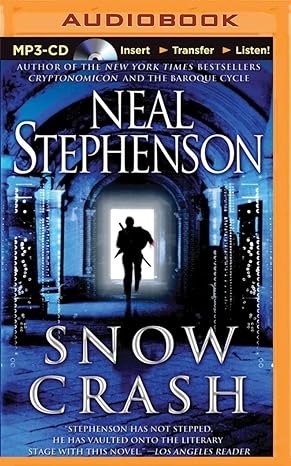
It’s fascinating to me to watch that sequence of events. It’s so predictable. It’s like physics. Missed meditation—I just know what’s going to happen. Occasionally, I don’t know if I get curious, or I think maybe this time it will be different, and I just go through with a whole sequence, but then always at the end, I’m like, why did I do that?
It’s short-sighted to skip meditation or a morning ritual to save a few minutes so that you can then ruin the whole day. I’ve done that plenty of times.
You mentioned science fiction. Are you a fan of Neal Stephenson?
I am, definitely.
My favorite book of his is The Diamond Age, followed by Snow Crash.
Fantastic books.
If our listener or viewer is interested in learning from you and taking your Building a Second Brain course, I highly recommend it. It’s phenomenal, and I want to take it again and work on that O part of CODE—the course, the book, all the community you have, and the membership. Where should we send them to work with you and learn from you?
Thank you. You can find everything at buildingasecondbrain.com. The books, courses, free content, blog posts, YouTube, and podcasts, the HQ is buildingasecondbrain.com.
Awesome. This was fabulous. One other thing I want to leave you with—just try it out and see if it fits—is something I learned in the last two years. It’s called Shufflemancy.
If you intend to get guidance from above and from such mundane places as your Facebook feed or the YouTube homepage, it’s called Shufflemancy. It’s like bibliomancy, where you open a book to receive guidance or insight. You just “randomly” open it to a page, and then there it is, the thing you need to read.
The PARA method can lower your stress and anxiety, and give you clarity when your digital world is in chaos. Share on XShufflemancy is like that but on a computer. I’m going to have an intention. I need to work on one of my 1200 favorite problems. I need some guidance. I will go to the YouTube homepage and see some recommended videos. And boom, that is exactly the video that you needed to see. That’s my homework assignment for you, Tiago.
I love that idea. I feel like I already practiced that in some way, but I never had a word for it.
Awesome. Thank you so much, Tiago, and thank you, listener. I hope you apply this in your life and not just passively consume it but get out there in the real world, apply it, and reveal more light so that they can spread it to others, too.
We’ll catch up with you in the next episode. I’m your host, Stephan Spencer, signing off.
Important Links
Connect with Tiago Forte
Books
Businesses/Organizations
Films
People
Previous Marketing Speak Episode
Previous Get Yourself Optimized Episodes
